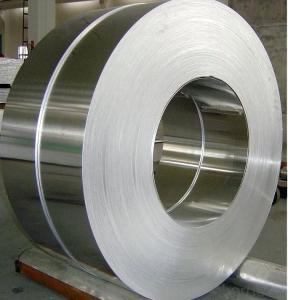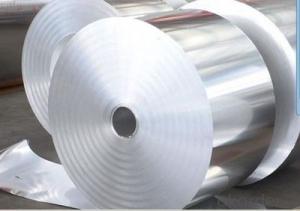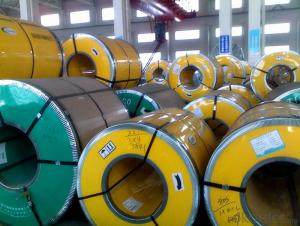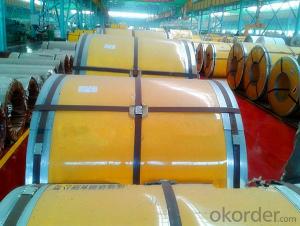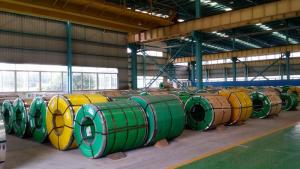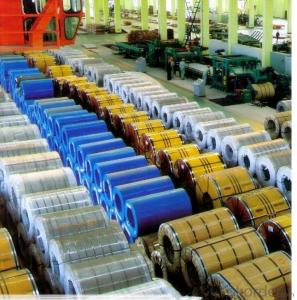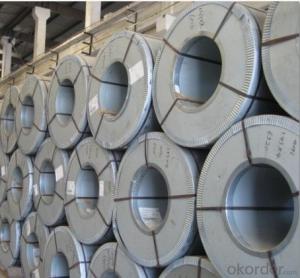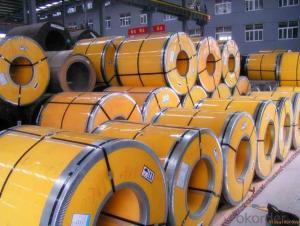stainless steel tape bright 2b finished cold rolled
- Loading Port:
- Qingdao
- Payment Terms:
- TT OR LC
- Min Order Qty:
- 50 m.t.
- Supply Capability:
- 50000 m.t./month
OKorder Service Pledge
OKorder Financial Service
You Might Also Like
Products Information
1>Thk:0.1mm-50mm
2>Width:100mm-3000mm
3>Length:Coil
4>Surface:BA,2B,No.1,No.4,HL,8K etc
Commodity | China good stainless steel tape | ||
Description |
Steel Coil/Stainless Steel Coil/Hot Rolled and Cold Rolled Stainless Steel Coil | ||
Standard |
ASTM A240, JIS G4304, JIS G4305, EN10028 etc | ||
Series |
200 Series |
300 Series |
400 Series |
Material |
201,202 | 301,304,304L,TP304,TP304L,309S,310S, 316,316L,TP316,TP316L,317L,321,347, TP321,TP347,321H,347H | 405,409,410,410S, 420,430 |
Thickness |
0.1mm-50mm | ||
Width |
1000mm,1219mm,1250mm,1500mm,1800mm,2000mm,2500mm,3000mm etc | ||
Length |
Coil or as demand | ||
Manufacture Type |
Hot Rolled, Cold Rolled | ||
Surface Treatment |
BA,2B,No.1,No.4,No.8,Hair Line,Mirror Finish,Embossed | ||
Packaging |
Wooden Case,Pallet Wooden,20'GP or 40'GP Container | ||
Application |
Stainless Steel Coil is widely used in Container,Shipping,Machine Manufacture, Kitchen and Hardware Tools,Oil and Chemical Industry,Food and Medical Industry, Agricultural and Light Industry,Surgical Knife etc | ||
- Q: What are they worth today? As well as a 1943 steel nickel?
- The 1943 zinc coated steel cent is very common in circulated grades. They were saved by a lot of people because they are a one year type coin. I can buy them for .02 to .10 each depending on grade. Uncirculated ones are worth more, a few dollars. There is no such thing as a 1943 steel nickel. The nickel that year were made of 56% copper,35% silver and 9% manganese. The 1943 nickel sells for around a $1 in very fine to $2 in extra fine. It is worth more in high grade mint state.
- Q: How are steel coils used in various industries?
- Steel coils are used in various industries for a wide range of applications. In the automotive industry, they are used to manufacture car bodies, chassis, and parts. In construction, steel coils are used in the production of beams, columns, and roofing materials. They are also utilized in the manufacturing of appliances, electrical equipment, and machinery. Additionally, steel coils are essential in the production of pipes, tubes, and other structural components. Overall, steel coils play a crucial role in providing strength, durability, and versatility to multiple industries.
- Q: How are steel coils used in the production of steel doors?
- Steel coils are used in the production of steel doors by being processed and shaped into sheets, which are then cut and formed to create the desired door components. These coils provide the raw material for manufacturing steel doors, ensuring their strength, durability, and structural integrity.
- Q: How are steel coils formed into specific shapes?
- Coil slitting and coil forming are the two processes used to shape steel coils into specific forms. In coil slitting, a large steel coil is unwound and passed through rotating circular blades that cut it into narrower strips of the desired width. These strips are then rewound into smaller coils called slit coils. Once the steel strips have been slit, they can undergo coil forming to achieve the desired shapes. Coil forming involves various processes such as roll forming, stamping, bending, or pressing. Roll forming gradually shapes the steel strip by passing it through a series of rollers designed to bend it in specific ways. Stamping, on the other hand, uses a die and a press to cut or shape the metal into intricate forms. This method is preferred when high precision is necessary. Bending and pressing are also employed to manipulate the steel strip into desired curves or angles. Bending utilizes machines or tools to apply force, while pressing employs hydraulic or mechanical presses to shape the steel strip according to the mold or die design. In conclusion, the formation of steel coils into specific shapes involves both coil slitting and coil forming techniques. These techniques, including roll forming, stamping, bending, and pressing, enable manufacturers to transform steel coils into various shapes and profiles, catering to different applications in industries such as construction, automotive, and manufacturing.
- Q: What are the common sizes of steel coils used in the industry?
- The common sizes of steel coils used in the industry vary, but some of the standard sizes include 0.4mm, 0.5mm, 0.6mm, 0.7mm, 0.8mm, 1.0mm, 1.2mm, 1.5mm, 2.0mm, and 2.5mm. However, it's important to note that different industries may have specific requirements and may use custom sizes depending on their applications.
- Q: Are steel buildings or homes better then wooden buildings? Why?
- Both have advantages and disadvantages. Wood is much cheaper than steel. Wood buildings are easier to construct. Wood more easily lends itself to finishing activities (drywall and such on the interior). Wood buildings can be repaired fairly easily when damaged. Steel is stronger, and can be used for much taller buildings. Steel is more durable, it lasts longer and is more resistant to degradation. Steel is more suitable for extreme situations such as earthquakes. The cost and purpose of the building typically drive the decision regarding what material to use. For homes, its usually not feasible to use steel frames, steel just costs too much. For tall buildings, for industrial buildings, steel is used because the benefits outweight the extra cost.
- Q: How are steel coils used in the production of packaging materials?
- Steel coils are used in the production of packaging materials as they are commonly used to manufacture metal cans, containers, and drums. These coils are processed and shaped into various forms to create sturdy and durable packaging options for a wide range of products, such as food, beverages, chemicals, and industrial goods.
- Q: What really is the difference between stain-less steel and iron? I only know that iron is an element, and stain-less steel is an alloy...but what else is there?
- Iron is an element. Steel is an alloy made of iron. Mild Steel, or Carbon Steel is made from at least 98% iron in a preocess that involves controlled application of heat. Other Steel Alloys contain significant ammounts of other elements. In the case of Stainless steel, these elements are Nickel and Chromium. In plain steel, the carbon content varies from 0.15% to about 1.4%. The higher the carbon content, the harder the steel is. Over 1.4% carbon, the steel becomes so hard that is also becomes brittle. Carbon content is also used to control the hardness of stainles steel. Because Stainless steel is corrosion resistant, it is often used for making food preparation equipment. Aluminum is NOT a common element in steel. Aluminum reacts to silicon content similarly to the way Iron reacts to carbon content. High strength Aluminum alloys often contain Magnesium.
- Q: What are the different steel coil packaging methods?
- Some of the different steel coil packaging methods include wrapping the coil with plastic or paper, using steel strapping or banding to secure the coil, placing it in a wooden crate or box, or using steel or plastic sleeves to protect the edges of the coil.
- Q: Can steel coils be used in the production of automotive parts?
- Yes, steel coils can be used in the production of automotive parts. Steel coils are often used in the manufacturing process of various automotive components such as body panels, frames, chassis, suspension parts, and engine parts. The steel coils are typically processed through various methods such as cutting, stamping, bending, and welding to shape them into the desired automotive parts. Steel is a preferred material for automotive parts due to its strength, durability, and resistance to corrosion. Moreover, steel coils are available in different grades and thicknesses, allowing manufacturers to tailor the material properties to meet specific requirements for different automotive applications. Overall, steel coils play a critical role in the production of automotive parts, contributing to the performance, safety, and longevity of vehicles.
Send your message to us
stainless steel tape bright 2b finished cold rolled
- Loading Port:
- Qingdao
- Payment Terms:
- TT OR LC
- Min Order Qty:
- 50 m.t.
- Supply Capability:
- 50000 m.t./month
OKorder Service Pledge
OKorder Financial Service
Similar products
Hot products
Hot Searches
Related keywords
